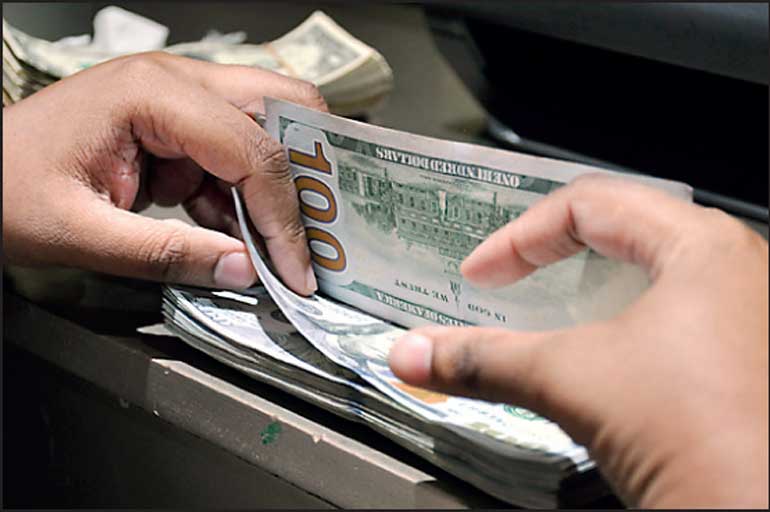Sunday Jan 12, 2025
Sunday Jan 12, 2025
Wednesday, 9 March 2022 00:26 - - {{hitsCtrl.values.hits}}

To apply brakes on plunging workers’ remittances via official channels, the Government has decided to increase the payment of Rs. 238 for every dollar.
The move follows the Central Bank on Monday devaluing the rupee with a cap of Rs. 230 per dollar from Rs. 203 previously. During the exchange rate regime of Rs. 203, remittances by migrant workers were paid Rs. 10 extra per dollar.
The decision to pay Rs. 238 per dollar remitted by migrant workers was made by the Cabinet of Ministers at its meeting on Monday.
“This is an incentive to attract more remittances. The Cabinet approved it before the decision was made to change the exchange rate,” Mass Media Minister and Cabinet Co-Spokesman Dullas Alahapperuma announced at the post-Cabinet meeting media briefing yesterday.
The proposal to this effect submitted by Labour Minister Nimal Siripala de Silva was approved by the Cabinet of Ministers on Monday. Minister Alahapperuma also said that the Central Bank will hold a special media briefing today, to clarify on the decision.
The move is amidst Central Bank coming under severe pressure to free-up the cap on the exchange rate, as the black market is thriving with the dollar being traded at between Rs. 240 to Rs. 260 at present.
As per its official rate yesterday, a dollar was traded at between Rs. 225.20 and Rs. 229.99. The Foreign Employment Sector, a major source of foreign inflows to the economy, which remits approximately $ 7-8 billion annually to Sri Lanka.
The Central Bank data showed, workers’ remittances – a major source of foreign exchange in Sri Lanka, dropped to a 10-year low at $ 5.49 billion in 2021. In January this year, it fell to a 13-year low of $ 259 million which is even more concerning.
When asked about the worker remittance inflows and its progress, Central Bank Governor Nivard Cabraal last week said it will gradually pick up, pointing out that economic measures take time to take shape.
“This is not a magic wind! These are economic measures and it takes time as there is a transmission period for it. Unfortunately, in Sri Lanka, people think that these are instantly driven,” he said.
However, economic experts claim the incentives of offering Rs. 10 extra on the exchange rate (now at Rs. 38) for official remittances have also not allured the migrant workers to the banking system, when the informal channels can provide up to Rs. 60 more than the official exchange rate. (CdeS)
